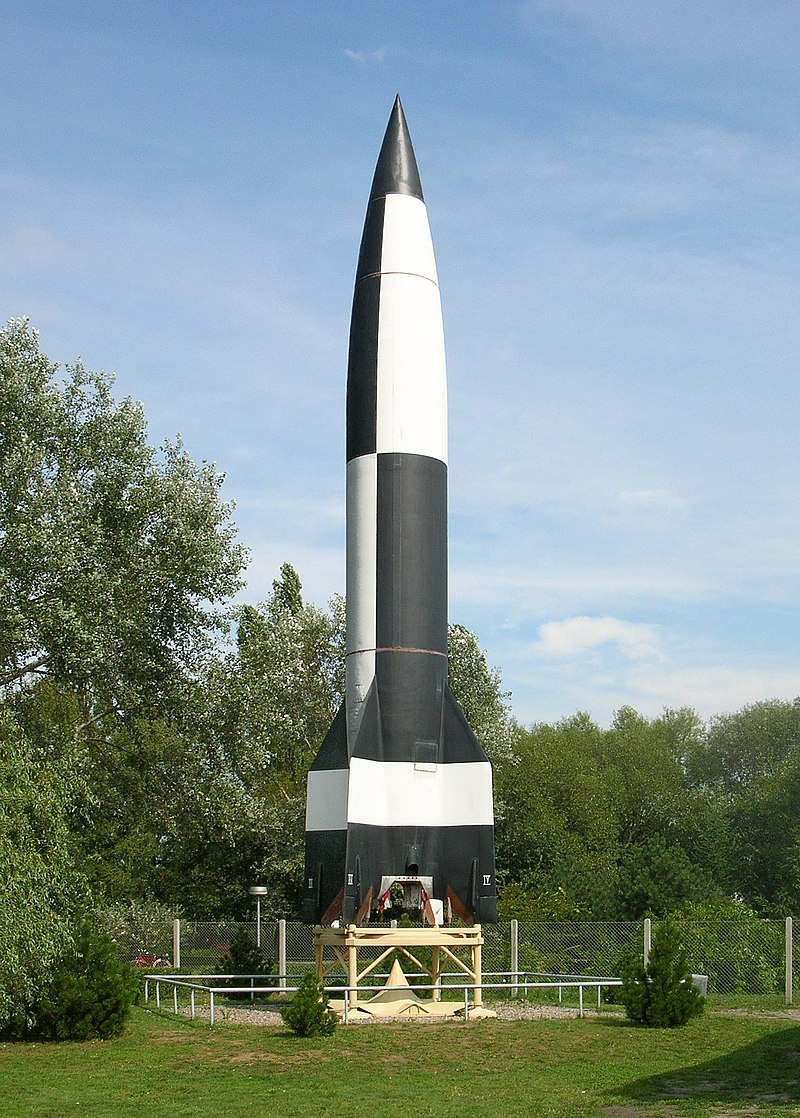The V-2
The V-2, a replacement for the V-1 and the first long-range guided ballistic missile in history, was possibly one of Hitler's Wunderwaffe's most well-known weapons. Hitler developed the V-2 as retaliation for the Allied bombing of German cities, and they started dropping on Allied cities in September 1944. During the course of the war, more than 3,000 were launched, and over 9,000 civilian targets perished. However, it took the lives of forced laborers the most. In the process of making these weapons, over 12,000 prisoners and workers from concentration camps perished.
The guidance system posed a particular challenge for the Allies because it made use of intricately designed gyroscopes that were impossible to jam. The British initially believed the weapon's guidance system used radio but attempts to jam it proved fruitless because it descended on its targets at a speed of almost Mach 3.
The V-2 was unstoppable because it was moving at supersonic speeds. Without any prior sound, it struck without warning. It was extremely challenging for Allied bombers to locate and neutralize them because they were launched from mobile platforms that could be well concealed in dense forests.
The Soviet Union and the Western Allies competed to reclaim as many V-2s and German scientists as they could after the war. Wernher von Braun, the program's lead scientist, was captured by the Americans and later helped develop the first rockets used in the country's space program. The Soviets also advanced their space program by using V-2 technology. The first intercontinental ballistic missile ever developed, which was a direct descendant of the V-2 and created by German scientists working for the Soviet Union, put Sputnik into orbit.










